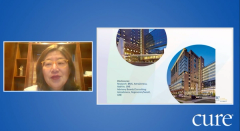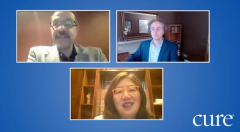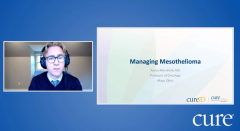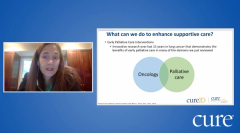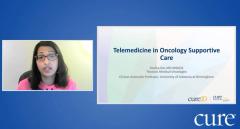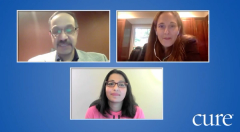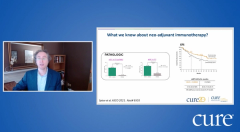
Educated Patient® Lung Cancer Summit Joining Clinical Trials Presentation: October 1, 2022
Watch Dana Haagen, from Fox Chase Cancer Center, discuss clinical trials and how patients can join them, during the CURE® Educated Patient® Lung Cancer Summit.
Episodes in this series

Clinical trials have drastically affected the lung cancer space, according to an expert.
“It’s through clinical trials that doctors are determining whether new treatments are safe and effective and whether or not they work better (than) what's currently available,” Dana Haagen, a clinical research coordinator at Fox Chase Cancer Center in Philadelphia, said during a presentation during the CURE® Educated Patient® Lung Cancer Summit.
During the presentation, she explained why clinical trials and research need to be recognized.
Research, according to Haagen, is important because lung cancer was universally fatal years ago. Now, she said, people are living longer lives because of successful cancer treatments that only came about because of previous clinical trials.
“To give you an idea, the number of deaths caused by lung cancer have certainly decreased and you've seen that over the last few decades,” she said. “And while reductions in smoking (have) played a huge role, the pace has been further accelerated in recent years by major advances in treatment.”
The Next Step
According to Haagen, clinical trials are not the first step, but rather a step in a long process that may culminate in a cancer drug being made available to the public.
In fact, before anyone is exposed to an investigational drug while enrolled on a clinical trial, researchers have spent upwards of decades in a lab ensuring that the treatment is safe to be administered to humans.
“Current federal law requires that before any new drugs can be used in humans on a clinical trial, data must first show that it is at least reasonably safe for initial use in humans, and that it has the potential to actually benefit,” she said. “This is why from the time that is identified and discovered in a lab to a drug finally receiving (Food and Drug Administration [FDA]) approval, it can take anywhere from 10 to 20 years sometimes, and the process is even longer in children.”
Taking Two Steps Back
A drug has to go through several phases before being FDA approved to be prescribed in humans, according to Haagen.
The first stop for a drug is in a phase 1 clinical trial with a primary goal of determining if the treatment is safe. Moreover, the aim in this phase is to identify any side effects and determine what’s known as a maximum-tolerated dose in patients.
According to Haagen, approximately half of the drugs tested in phase 1 trials are approved to be evaluated in a phase 2 trial. Here, investigators are looking to test the efficacy of the drug in a smaller patient population. More information regarding side effects is often presented during a phase 2 trial.
Less than 1 in 3 drugs move on to a phase 3 trial, Haagen explained. If a drug progresses to a phase 3 trial, more patients are enrolled to see the effects of the drug on a larger patient population.
Haagen then noted that there’s a phase 4 component to the process. However, in this case, drugs have already received FDA approval. Drug manufacturers now must continue to submit data to the FDA as they monitor for long-term side effects.
“There are some symptoms that may not have been seen initially in the smaller numbers of clinical trials, things that are extremely rare that may only appear in 1 in 100,000, or 200,000 (people),” she said.
Debunking Myths and Misconceptions
Although there are advances year after year, many people have misconceptions about clinical trials, according to Haagen.
One such myth, Haagen said, is that patients will be treated as guinea pigs.
She noted that this is false considering that several governing bodies, including the FDA, have done their due diligence to ensure that a drug is safe and has the possibility to benefit humans before it can be studied in a clinical trial.
Another myth is that patients who sign up for clinical trials receive a placebo, according to Haagen.
However, she explained that a placebo is usually only used in phase 3 trials alongside the current standard of care and patients are always informed about the possibility of receiving a placebo. Although, she stressed, it doesn’t mean that they will receive a placebo.
For more news on cancer updates, research and education, don’t forget to

